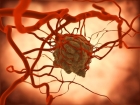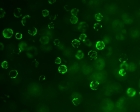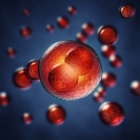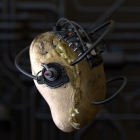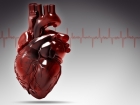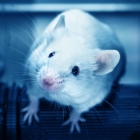Press monitoring
Scientists find new cancer-killing compound in sea snail goo
28.8.2019 | Press monitoring
The natural world is a huge source of important medicines, and among all the species that scientists turn to for inspiration the humble snail continues to provide the goods. New and improved insulins and painkillers are a couple of possibilities these mollusks have put forward, and researchers have uncovered yet another in the form of an...
Scientists say sustainable forestry organizations should lift ban on biotech trees
26.8.2019 | Press monitoring
Look at anything made from trees – a ream of paper, a cardboard box, lumber – and it's probably stamped with the logo of the Forest Stewardship Council (FSC) or an equivalent organization. These nonprofits certify that forests are managed sustainably, and one common requirement is no genetically modified (GM) trees. But that ban hinders...
MIT and Harvard use CRISPR to edit DNA gels for diagnostic devices
23.8.2019 | Press monitoring
CRISPR is a powerful gene-editing tool that’s showing real promise in treating diseases like HIV, cancer, diabetes and a host of others. Now, new research from MIT and Harvard is showing how versatile this tool is, putting CRISPR’s genetic scissors to work in diagnostic tools and timed drug delivery systems. CRISPR works by using certain enzymes...
All-in-one: New microbe degrades oil to gas
21.8.2019 | Press monitoring
Archaea have presented many surprises in recent years. Now, a study led by scientists from the Max Planck Institute for Marine Microbiology in Bremen, Germany, and the MARUM, Centre for Marine Environmental Sciences, provides environmental information, genomes and first images of a microbe that has the potential to transform long-chain...
Paper filter from local algae could save lives in Bangladesh
19.8.2019 | Press monitoring
The problem of access to safe drinking water in most parts of Bangladesh is a persistent challenge. Now, a team of scientists from Uppsala University, Sweden, and Dhaka University, Bangladesh, shows that a locally growing and previously unexploited green macroalgae species could be used to extract cellulose nanofibers, which can then be formed...
Scientists are making human-monkey hybrids in China
16.8.2019 | Press monitoring
In a controversial first, a team of researchers have been creating embryos that are part human and part monkey, reports the Spanish daily El País. According to the newspaper, the Spanish-born biologist Juan Carlos Izpisúa Belmonte, who operates a lab at the Salk Institute in California, has been working working with monkey researchers in China to...
Nanocapsule reaches cancer that has spread to central nervous system in mice
14.8.2019 | Press monitoring
Cancer that has spread to the central nervous system is notoriously difficult to treat. Now, UCLA researchers have developed a drug delivery system that breaks through the blood-brain barrier in order to reach and treat cancer that has spread to the central nervous system. In research conducted in mice, a single dose of cancer drugs in a...
Cyborg organoids offer rare view into early stages of development
12.8.2019 | Press monitoring
What happens in the early days of organ development? How do a small group of cells organize to become a heart, a brain, or a kidney? This critical period of development has long remained the black box of developmental biology, in part because no sensor was small or flexible enough to observe this process without damaging the cells. Now,...
3D printing the human heart
9.8.2019 | Press monitoring
A team of researchers from Carnegie Mellon University has published a paper in Science that details a new technique allowing anyone to 3D bioprint tissue scaffolds out of collagen, the major structural protein in the human body. This first-of-its-kind method brings the field of tissue engineering one step closer to being able to 3D print a...
Chimeric mighty mouse with human brain cells to advance Alzheimers research
7.8.2019 | Press monitoring
Researchers from University of California, Irvine have developed a new transgenic mouse model with human brain immune cells. The novel breakthrough will allow scientists the ability to observe how human brain cells respond to different Alzheimer's-inducing toxic proteins, significantly advancing our understanding into how neurodegenerative...
